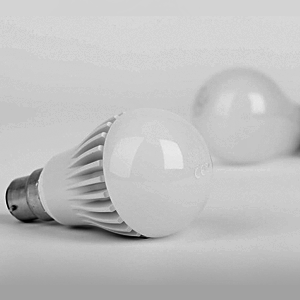
Using LED Lights to Your Advantage - Is It Really Better than Regular Light Bulbs?
June 5, 2015
LED lights have come of age, proving that the technology is the next logical stage in the evolution of the light bulb. First of all, an LED light fixture is the common sense choice when adopting an environmentally-friendly construction philosophy. In weighing the attributes of the two light sources, LED lighting can emit as much luminescence as a high-wattage light bulb but do so while consuming a fraction of the energy used by the older, less efficient light bulb. In fact, in terms of Watts, the future of the LED is assuredly bright (excuse the light-hearted pun) because today's LEDs lap up a tiny 9 Watts when a comparable 60-Watt incandescent is eating up six times that wattage without offering any greater luminescence (www.eartheasy.com).
There are other telling factors that illustrate the inevitable demise of the light bulb, and one of these relates to a dramatic reduction in maintenance. LEDs are capable of running for tens of thousands of hours, a feature that old light bulbs can't begin to match. Time and time again, the science win out, with the LED running for around 50,000 hours while a regular light bulb burns out with a pop at 1,200 hours. At this point readers may begin to wonder why LEDS haven't taken over before now and why the change isn't happening faster. There are, naturally enough, reasons for this delay, with our stubbornness to adopt new technology heading the list.
It's maybe unfair to say that folk don't want to embrace the latest gadgets, especially since we all line up to buy new smartphones and computers, but there's something more basic, even primal about a light bulb. It banishes the dark with the flick of a switch. Thankfully, that single very human stubbornness factor is being overcome as public opinion recognizes the value of LED lights, how they offer low maintenance features and big energy savings. There's another very practical reason we've hesitated before purchasing a long-lasting LED fixture; the technology still comes with substantial price tag attached, but these higher costs are being driven down almost as fast as LED lights are flying off of store shelves.
One final characteristic, an engineering factor that has held LED technology back for some years, has been conquered. We're referring to the limited light spectrum once output by LEDs. Older LED technology exhibited unpleasant colour shifts and became known for radiating a cold white light, but these drawbacks are long since gone as the technology entered a refinement phase. Modern lights radiate the same warm hues (colour temperatures that lay between 2,200-Kelvin and 2,700-Kelvins) that incandescent light bulbs project, adding soft and candle-bright hues to crucial energy savings.
Check out some of the newer features that are on the horizon for LEDs. Still as simple to turn on and off with the flick of a switch, new varieties are being developed. These variants use Bluetooth technology and wireless assets to change the colour of the LED or dim the smart lighting, thus ushering in the smart home generation.
Optimized by NetwizardSEO.com.au
Recent posts
- Using LED Lights to Your Advantage - Is It Really Better than Regular Light Bulbs?
- What You Need to Know about Commercial Preventative Maintenance Programs with O'Brien Electrical and Communications
- The Importance of Electrical Safety and Maintenance for Your Home and Business
- Importance of Installing Burglar Alarms in Your Home
- Importance of having a CCTV camera in your home?
- Professional Residential Electrical Contractors in New South Wales
- Trusted Commercial Electrical Installations in NSW
- Hiring Commercial Electrical Contractors
- Located in Inner West or the Eastern Suburbs? Look no further for a an electrical or communications specialist for your home or business
- Electrical Installations - Leave it to the Professionals
- Residential Electrical Services in New South Wales
